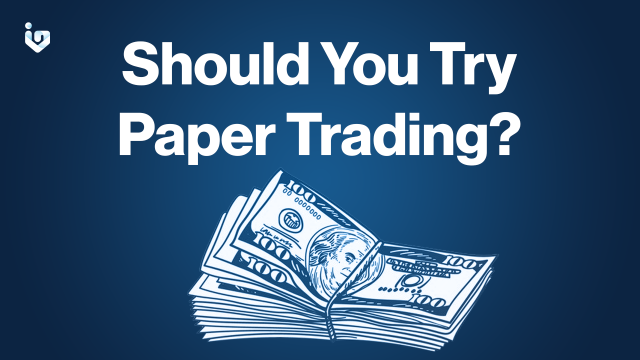Paper trading is a practice of simulating trading activities without risking real money. It is also known as virtual trading, demo trading, or backtesting. It can be done manually, using a spreadsheet or a journal, or electronically, using a platform or a software program.
Paper trading can be useful for beginners who want to learn the basics of trading
It teaches you how to place orders, read charts, use indicators, and apply strategies. It can also be helpful for experienced traders who want to test new ideas, refine their skills, or evaluate their performance.
However,it is not without its limitations and drawbacks. In this article, we will discuss some of the pros and cons of paper trading, and whether you should try it or not.
Pros of Paper Trading
No risk of losing money
The most obvious benefit of paper trading is that you can trade without risking any of your hard-earned money. This can reduce the stress and emotions that often affect trading decisions, such as fear, greed, overconfidence, or regret. It can also allow you to trade with larger amounts or higher leverage than you would normally do, which can boost your confidence and learning curve.
Learning opportunity
Paper trading can be a great way to learn the mechanics and dynamics of trading, especially if you are new to the market. You can familiarize yourself with the trading platform, the order types, the market conditions, the technical analysis tools, and the trading strategies. You can also learn from your mistakes and improve your trading plan without losing money.
Testing ground
Paper trading can be a useful tool for testing and validating your ideas, systems, or strategies. You can backtest your strategies using historical data, or forward test them using live data. You can also compare different strategies, parameters, or markets, and see which ones perform better. It can help you optimize your performance and find your edge in the market.
Cons of Paper Trading
Lack of realism
Paper trading can never fully replicate the real environment, as there are many factors that affect trading outcomes that cannot be simulated. For example, it does not account for slippage, commissions, spreads, liquidity, execution speed, or market impact. Paper trading also does not reflect the psychological and emotional aspects of trading, such as stress, anxiety, excitement, or boredom. It can create a false sense of security or success, which can lead to overconfidence or complacency when switching to real trading.
Different results
Paper trading can produce different results than real trading, due to the factors mentioned above. It can also be influenced by hindsight bias, confirmation bias, or survivorship bias, which can skew your perception and evaluation of your trading performance. Paper trading can also be affected by data mining, curve fitting, or overfitting, which can make your strategies look good on paper, but fail in reality.
Limited feedback
Paper trading can provide limited feedback on your performance, as you do not experience the consequences of your actions. It can also make you less accountable and disciplined, as you do not have to follow your rules or risk management. It can also make you less motivated and committed, as you do not have any skin in the game.
Should You Try Paper Trading?
Paper trading can be a valuable tool for learning and testing trading, but it should not be the only or the final tool. It can help you develop your trading skills and knowledge, but it cannot replace the real trading experience. It can also help you prepare for real trading, but it cannot guarantee your success or profitability.
If you want to try it, try to remember these considerations:
- Set realistic goals and expectations: Paper trading should not be used as a way to make money, but as a way to learn and improve. You should set realistic and measurable goals for your paper trading, such as learning a new strategy, improving your win rate, or reducing your drawdown. You should also be aware of the limitations and differences, and not expect the same results in real trading.
- Treat it as real trading: Paper trading should be treated as seriously and professionally as real trading. You should follow your trading plan, rules, and risk management, as if you were trading with real money. You should also record and review your paper trades, and analyze your performance and feedback. You should also avoid changing your strategies or parameters too often, or jumping from one market to another, as this can reduce your consistency and reliability.
- Transition to real trading: It should not be done indefinitely, but as a stepping stone to real trading. You should have a clear and specific criteria for when to switch from paper trading to real trading, such as reaching a certain level of profitability, confidence, or competence. You should also start with small amounts or low leverage when transitioning to real trading, and gradually increase them as you gain more experience and comfort.
- Paper trading can be a helpful and effective way to learn and practice trading, but it should not be the end goal. Itg can help you develop your trading skills and knowledge, but it cannot replace the real trading experience. It can also help you prepare for real trading, but it cannot guarantee your success or profitability.
As with any endeavor
Practice is an important aspect towards becoming better. For trading, there are many ways to improve. While some might find paper trading boring, it wouldn’t hurt to try it out. You could test some of your strategies, or even just try to look for inspiration for new ones. If you’re looking for a place to do so, check out vTrade.
Additionally, if you really want to test out your skills you can check out the upcoming Trading Cup 2024! Details will be posted on the Investa pages soon, so stay tuned!

